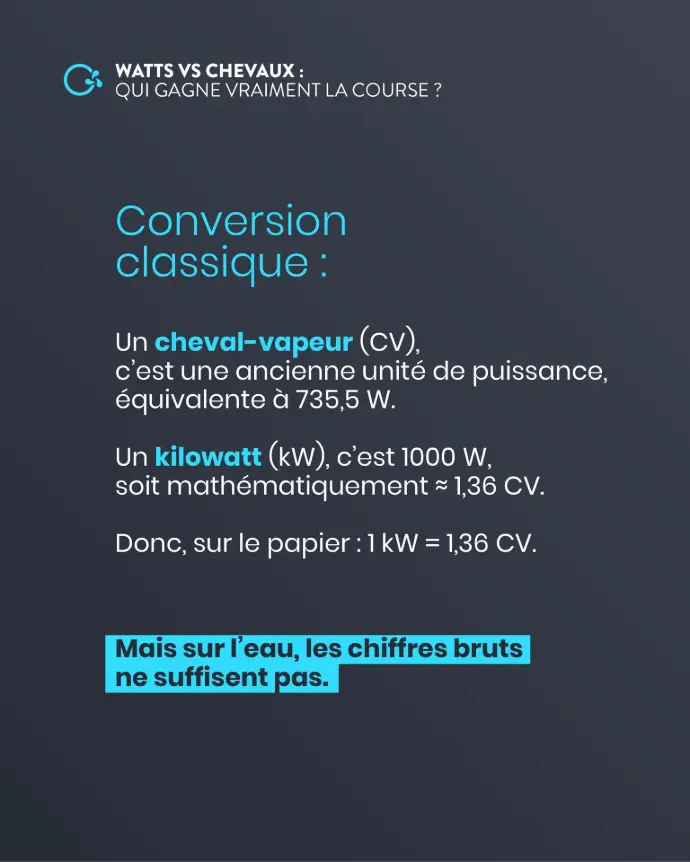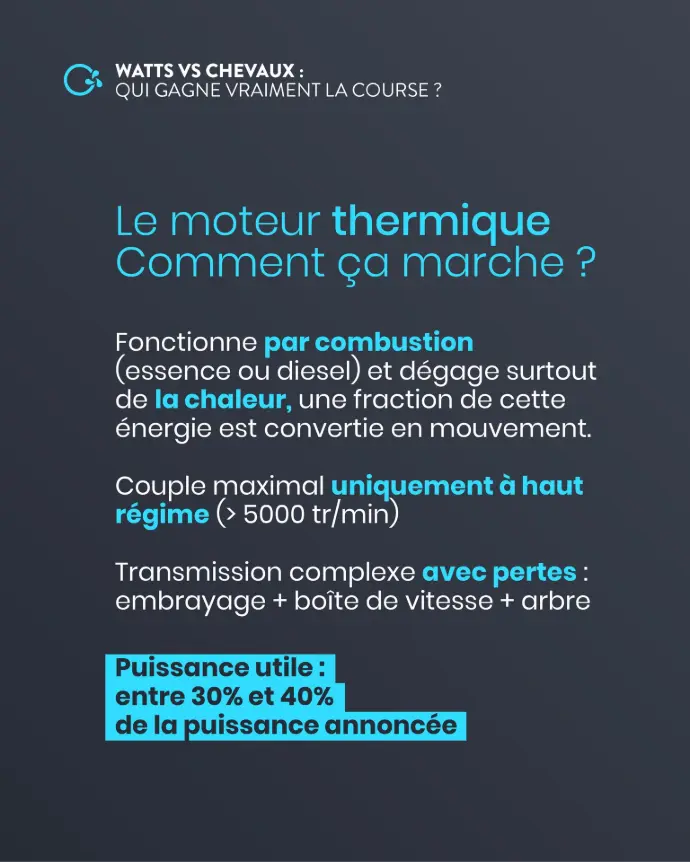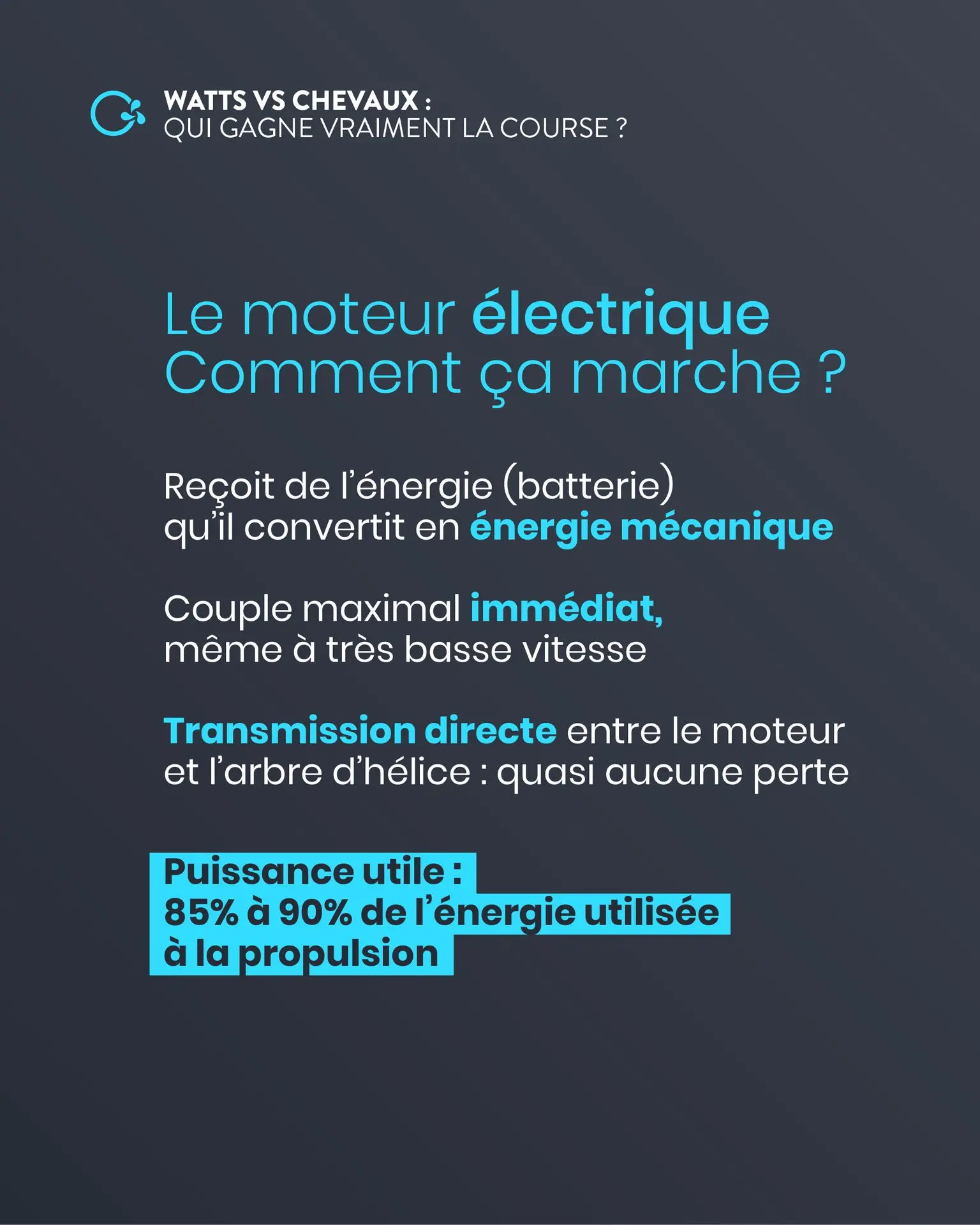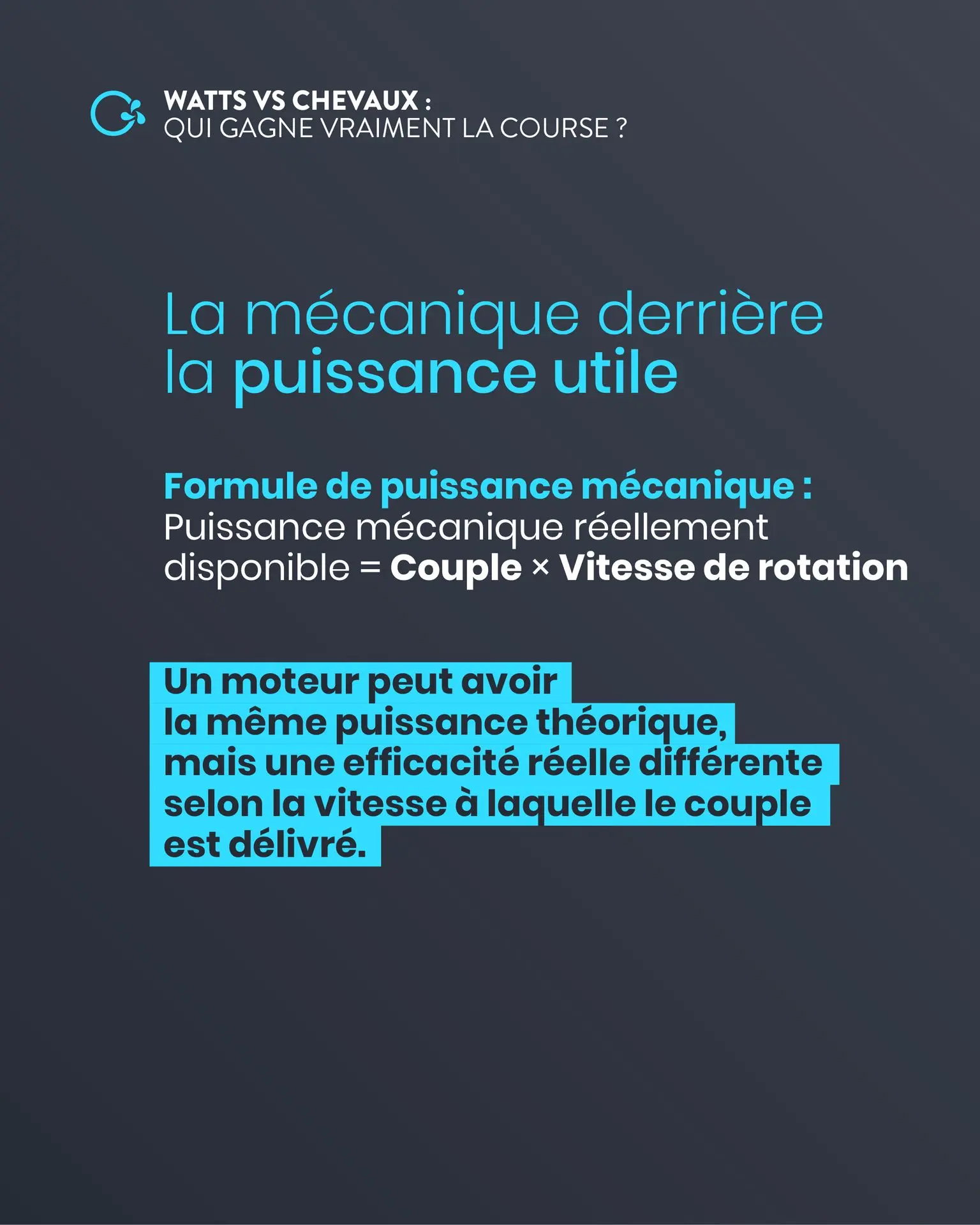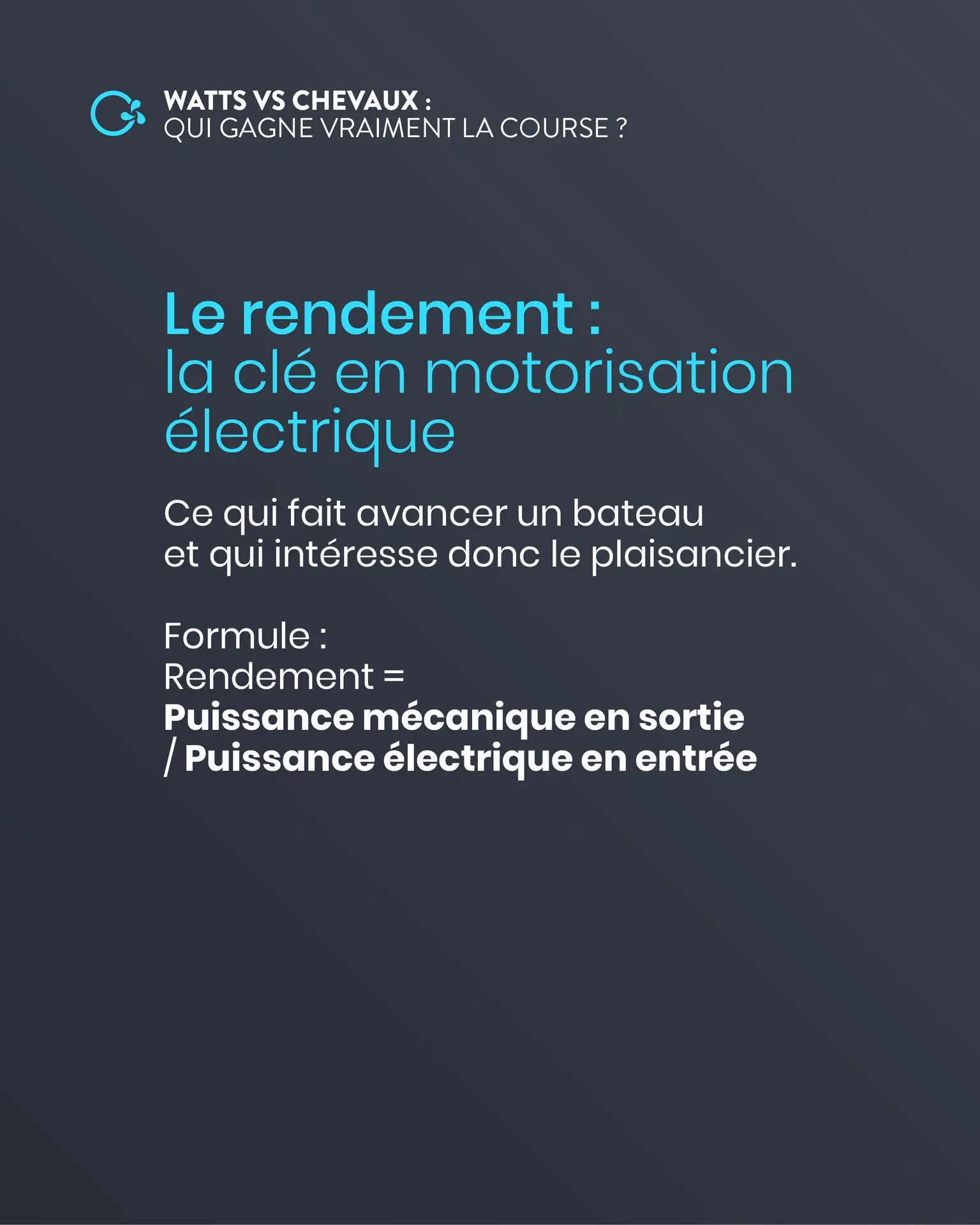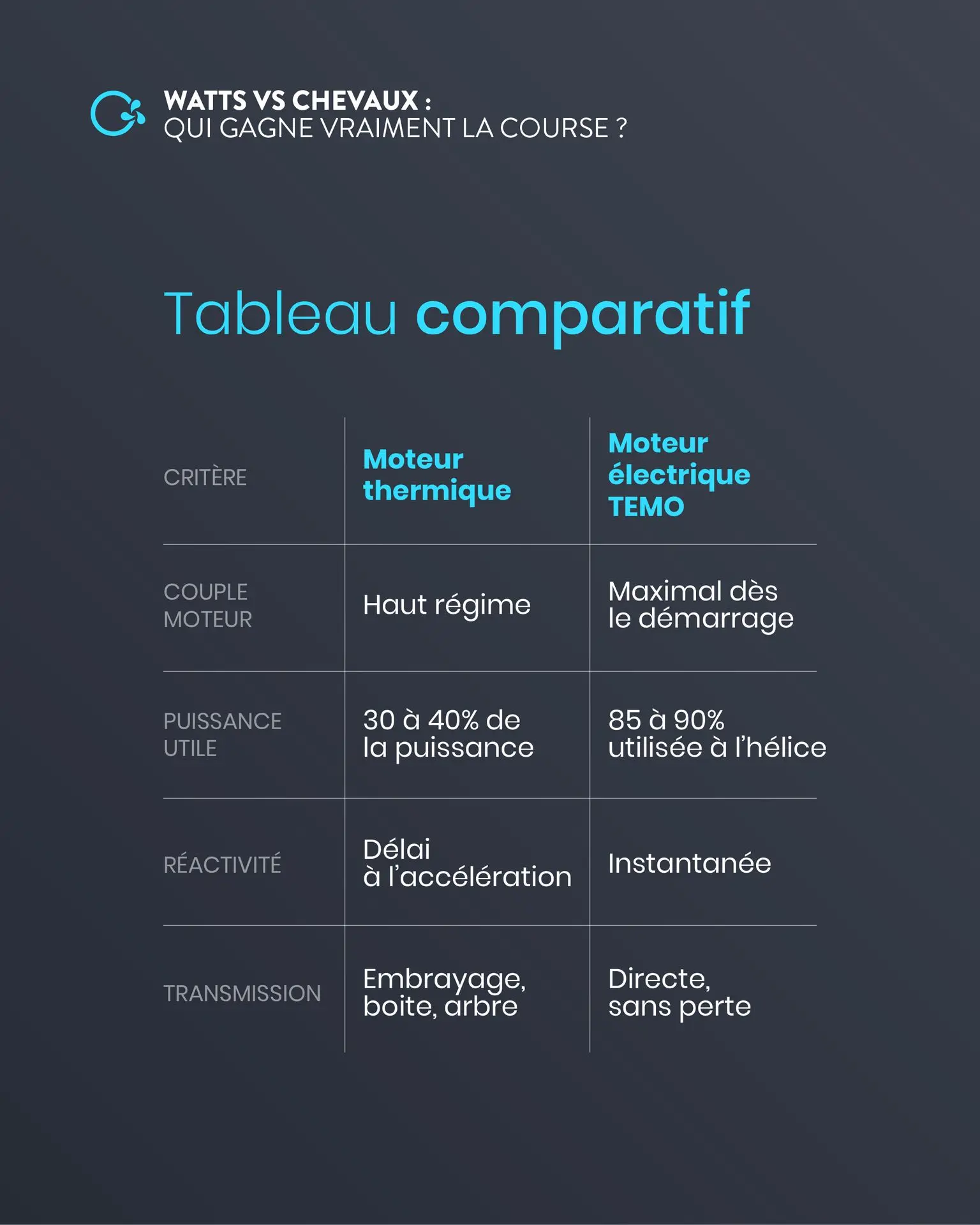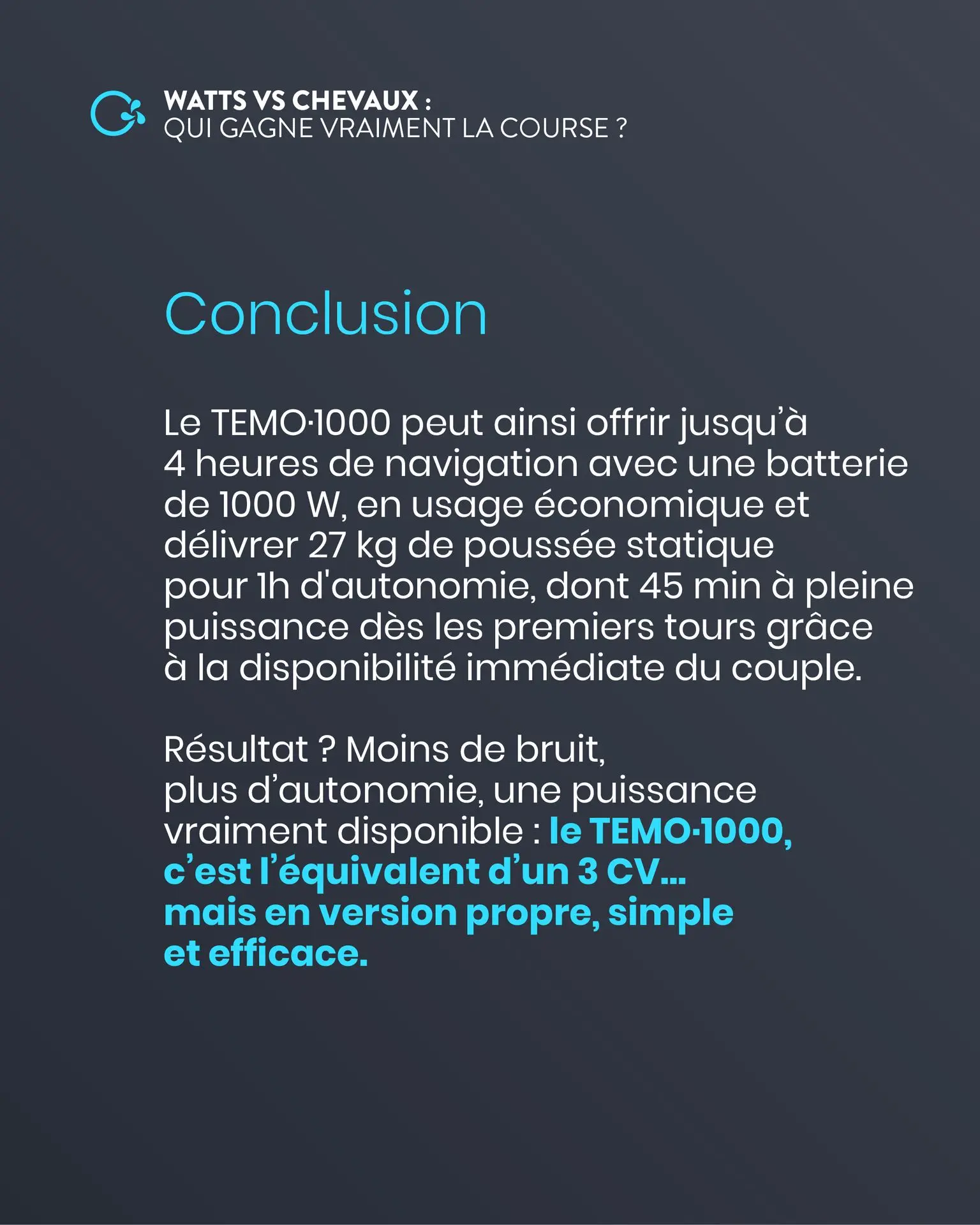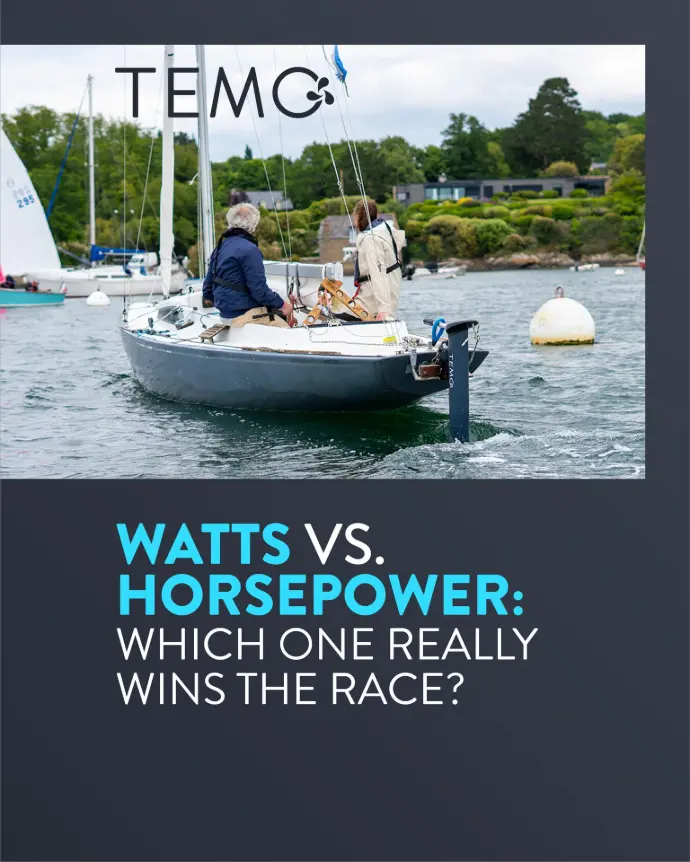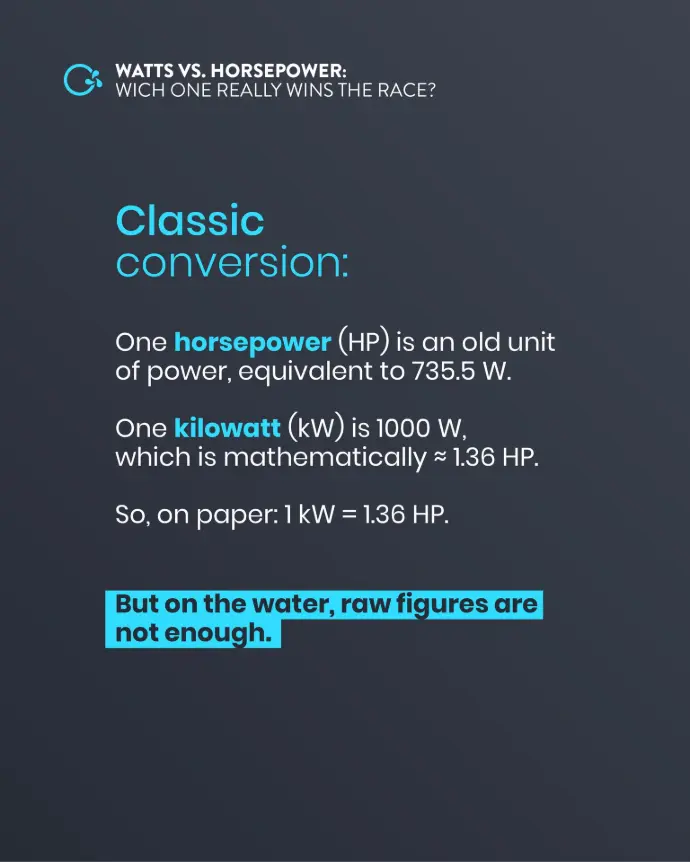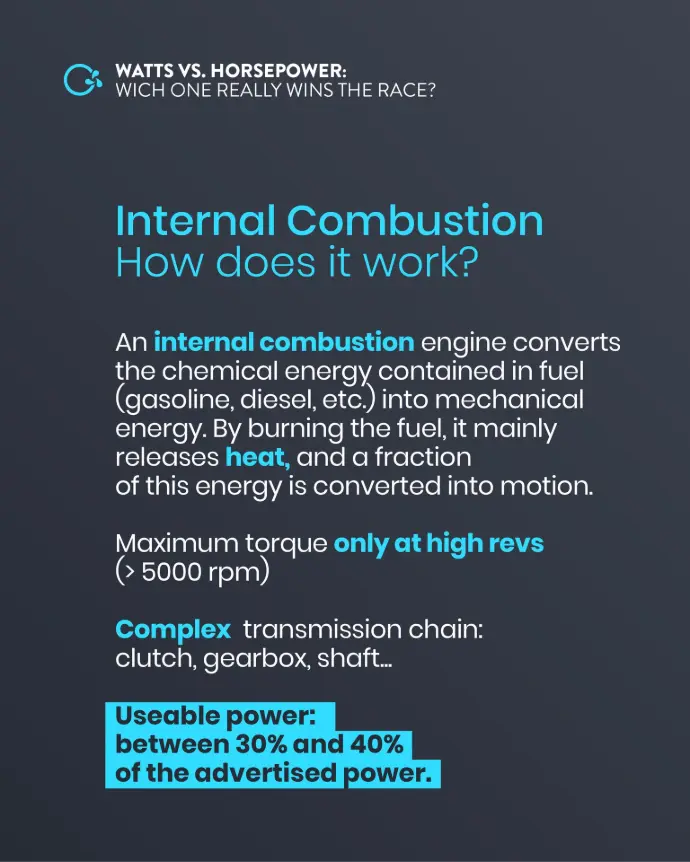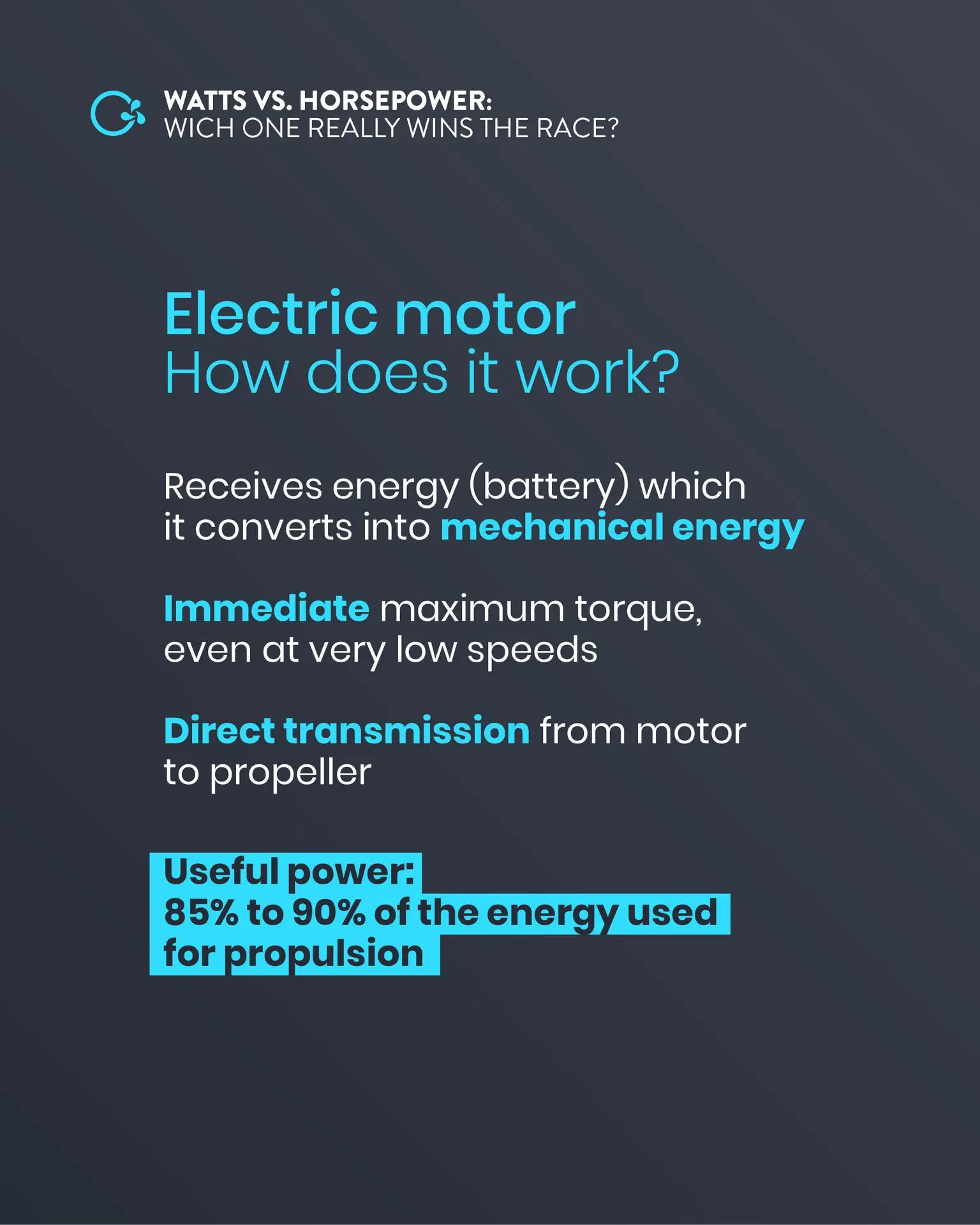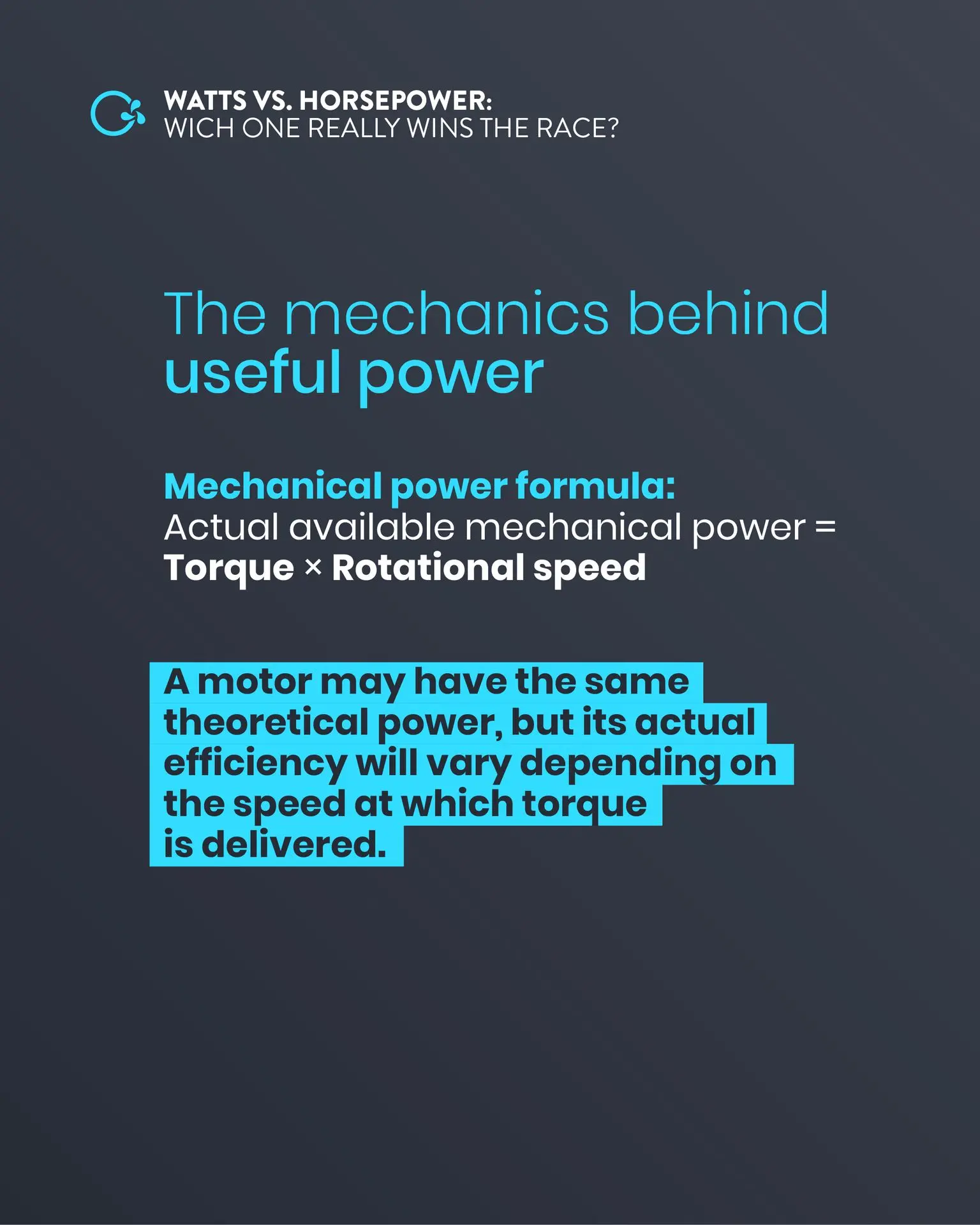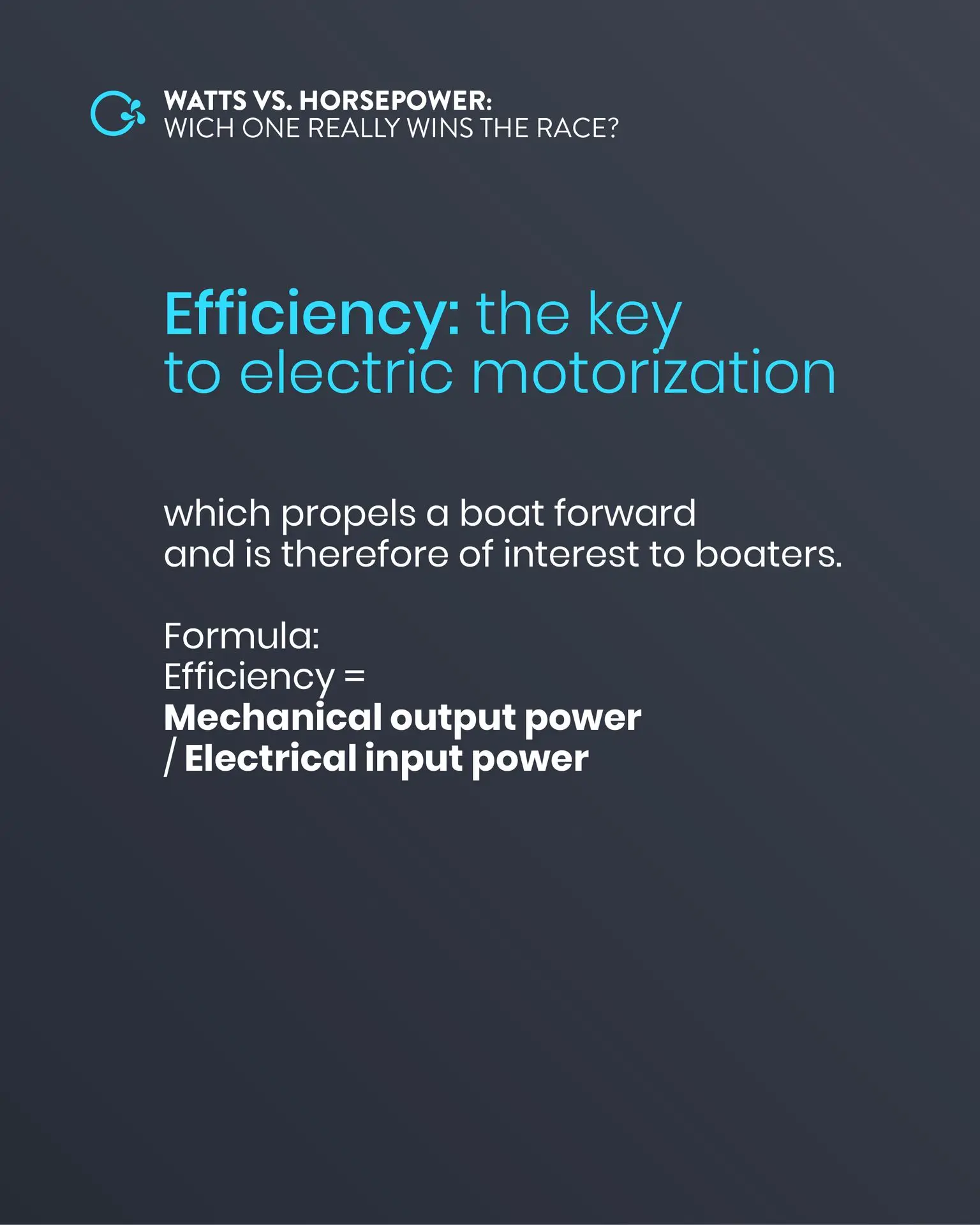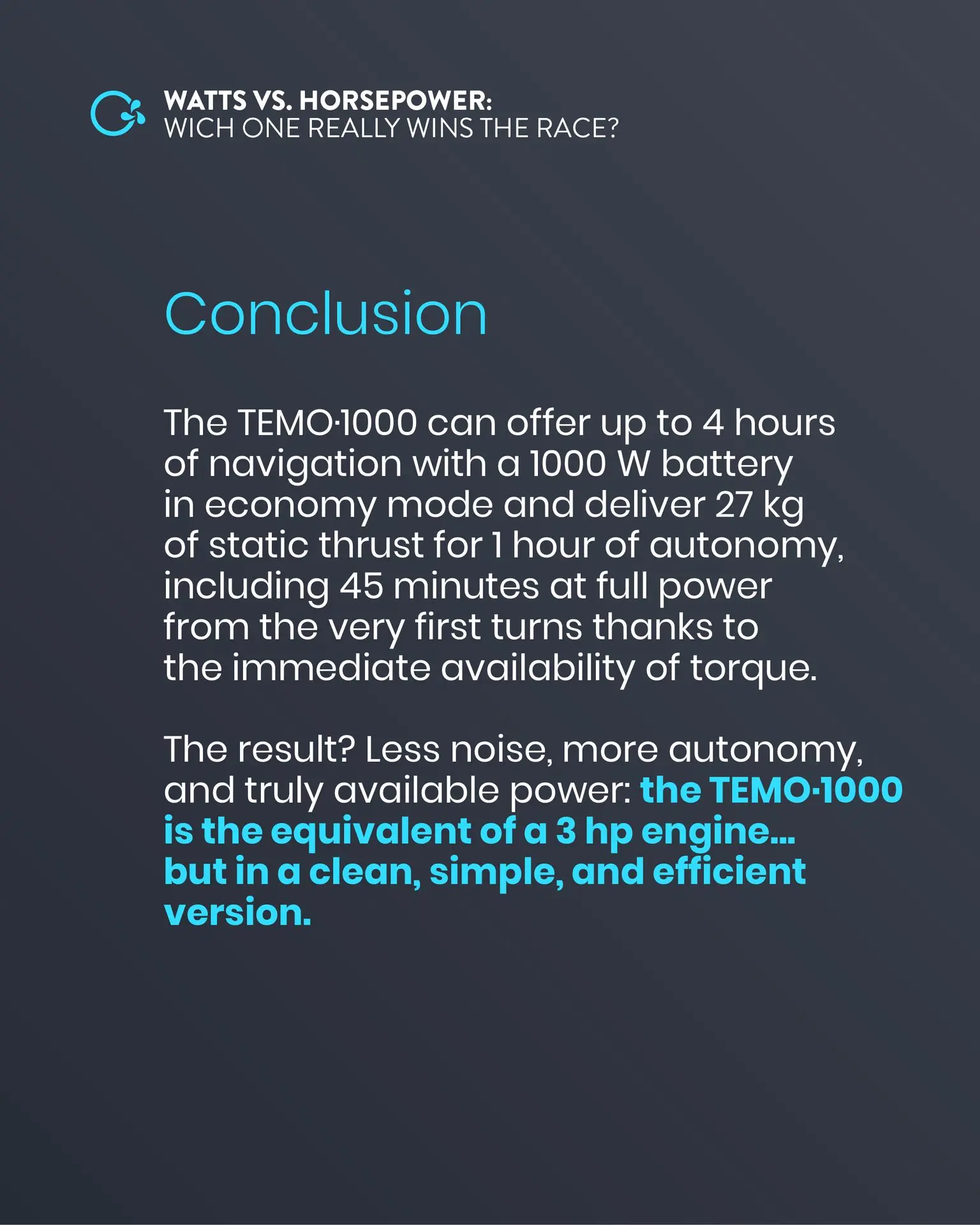Did you think that 1 horsepower was equal to 735.5 watts? You’d be right. But when TEMO tells you that its 1,000-watt electric motor is equivalent to a 3-horsepower internal combustion engine, it’s not a conversion error—it’s the reality of the racecourse.
Welcome to the (electric) world of power.
Horsepower, watts, energy efficiency: each running their own race
One horsepower (HP) is an old unit of power, equivalent to 735.5 W.
One kilowatt (kW) is 1000 W, which is mathematically ≈ 1.36 HP.
So, on paper: 1 kW = 1.36 HP.
But on the water, raw figures simply don’t give enough information.
So why does TEMO claim that its TEMO·1000 is equivalent to 1 kW = 3 internal combustion horsepower? Because on water, it’s not just about nominal power, but also useable power, available torque, and propeller efficiency.
Did you know?
The history of mechanical power dates back to the 18th century, when Scottish engineer James Watt invented the “horsepower” to provide a concrete reference for the power of his steam engines. This was a vivid unit of measurement, intended to convince a public still attached to their trusty draft horses, equivalent to 75 kilogram-meters per second (75 kgf.m/s), or the power required to lift a weight of 75 kg vertically to a height of 1 meter in 1 second.
In his honor, the International System later adopted the Watt (W) as the official unit of power. Since then, HP and W have coexisted... but be careful: converting between these units is a matter of simple, precise mathematics. Where it gets complicated is when comparing combustion engines to electric motors. At equal power, the feel and distribution of torque are different.
In short, yes, 1 hp = approximately 735.5 W. But the electric motor has that little "something extra" that makes all the difference when you take the helm.
Two types of motor, two mechanical philosophies
Before making any comparisons, it’s essential to remember that internal combustion engines and electric motors are based on very different operating principles:
Internal Combustion
An internal combustion engine converts the chemical energy contained in fuel (gasoline, diesel, etc.) into mechanical energy. By burning the fuel, it mainly releases heat, and a fraction of this energy is converted into motion. This type of motor performs best at high engine speeds.
Electric
Electric motors do not produce any power themselves. They receive electrical power, usually from a battery, which they convert into mechanical energy. They deliver their maximum torque right from their lowest speeds, which allows them to be instantly efficient, without a gradual increase in power.
What is power and how is it measured?
Mechanical power
The power of energy is the product of the rotational speed and the torque (expressed in Newton meters (Nm)), which is the rotational force that the motor can exert on the propeller shaft.
Formula: Power = Torque × Rotational speed
The higher the torque, the more the motor is capable of moving a heavy load, withstanding stress or, in the case that concerns us here, driving the propeller with force, particularly when starting to move or moving at low speeds.
Multiplying this torque by the rotational speed of the shaft gives the mechanical power that’s actually available to the propeller. This result determines the effective capacity of the motor to propel the boat along.
Efficiency: what’s produced vs. what is lost
Gross power is not enough. You also need to consider efficiency, i.e. the motor’s ability to efficiently convert the electrical energy supplied by the battery into useful mechanical energy, which propels a boat forward—and is therefore of interest to boaters.
In concrete terms, efficiency is calculated as follows:
Formula: Efficiency = Mechanical output power / Electrical input power
Transmission, the key to electric propulsion
Let's take a combustion engine advertised as having 3 horsepower (3 HP). On paper, it can indeed produce this power, but only under very specific conditions: throttle wide open, high engine speed (often above 5000 rpm), properly sized propeller, boat traveling at high speed. In other words, the engine has to be pushed to its limits to achieve those famous 3 HP. Suffice to say, this is a rare scenario for recreational boaters who maneuver at low speeds or enter and exit ports. Below this optimal speed, the power actually transmitted to the propeller is much lower, despite what the label promises.
Added to this are losses related to the efficiency of the engine itself, but also to the transmission chain: clutch, gearbox, shaft... all of which are opportunities for energy to be dissipated as heat or friction.
Unlike an internal combustion engine, which needs to “rev up” to reach its maximum torque (and risks stalling below 1000 rpm), a TEMO electric motor delivers its torque from the lowest engine speeds, almost from zero. Thanks to direct transmission between the motor and the propeller shaft, without a clutch or gearbox, almost all of the energy is transmitted to the propeller without any significant loss. As a result, there is no need to rev up to be efficient.
Internal combustion engine | TEMO electric motor | |
| Engine torque | Available at high revs | Maximum from the start |
Useable power | between 30% and 40% of the advertised power | 85 to 90% used for propulsion |
Responsiveness | Delay between acceleration and reaction | Instant |
Transmission | Mechanical losses | Direct drive, no gearbox |
The result? Most of the energy stored in the battery is actually used, which significantly optimizes range. The TEMO·1000 can thus offer up to 4 hours of navigation with a 1000 W battery, in economical use, and deliver 27 kg of static thrust for 1 hour of range, including 45 minutes at full power from the very first turns thanks to the immediate availability of torque.
The impact of boater behavior on energy consumption
Sailing with electric power also means learning to sail differently. Unlike with internal combustion engines, which tend to “accelerate to move forward” electric motors emphasize smoothness.
With an internal combustion engine, every acceleration, jolt, or restart requires revving up
to reach the necessary torque – something that is energy-intensive, noisy, and often
imprecise at low engine speeds. Conversely, a TEMO electric motor delivers its torque
instantly, even at very low speeds, allowing for smooth maneuvering, gradual acceleration,
and naturally optimized consumption.
Above all, it’s important to keep in mind a simple rule: a boat’s maximum speed depends
much more on its hull than on its engine. Once hull speed is reached, any additional power
is no longer used to go faster, but to create more waves. In other words: energy lost in the
wake.
In this case, easing back the throttle lever (or rather, here, the control wheel!) allows you to consume less... without losing speed. Cleaner, quieter, and more efficient boating. It really is that simple.

